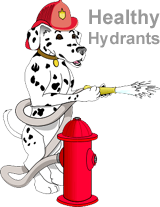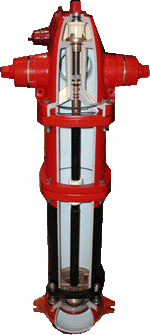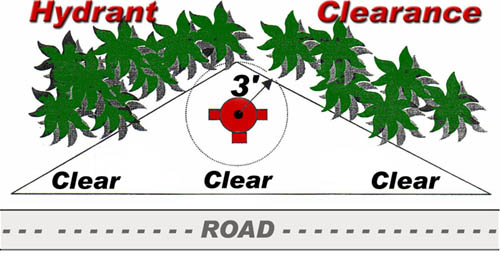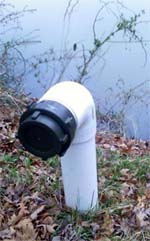REDUCE 9-1-1
DELAYS

This 5 Minute Task
Could Save Your Life!
Healthy Hydrants Guidelines
 Fire can doubles in size about every 15 to
120 seconds
(source)
before fire department intervention. A two minute delay could mean the fire is 8 times
larger.
Does your hydrant work? Does you backup hydrant work?
Fire can doubles in size about every 15 to
120 seconds
(source)
before fire department intervention. A two minute delay could mean the fire is 8 times
larger.
Does your hydrant work? Does you backup hydrant work?
 As
a property owner it is Better
to ensure
that your backup fire hydrant and your primary fire hydrant
are in good working order than to leave it to someone else.
As
a property owner it is Better
to ensure
that your backup fire hydrant and your primary fire hydrant
are in good working order than to leave it to someone else.
A fire hydrant is more complicated than what you might expect. Regular inspections and maintenance of fire hydrants by the fire department or water department are essential to ensure adequate water resources during fire and other related emergencies. If a fire hydrant malfunctions or becomes inaccessible, fire department operations may be hampered.
As a property owner it is typically your responsibility to maintain the proper clearance around a hydrant. Pictured below is a typical clearance specification, but you should check with you local department for its specific requirements. If your area uses a dry hydrant*** (pictured right), use a similar specification and be aggressive to ensure the clearance specification is in compliance.
If your hydrant is not on your property and you see that clearance is not properly maintained, be assertive and insist that it be visible at all times. Call the fire department and ask that they talk with the property owner about the oversight. Consider appropriate markings for heavy snow country.

The hydrant is paid for by your taxes. Your municipal water supplier provides the water, but who is responsible for the good working order of the hydrant? Most likely your local Fire Department or Water Department is responsible for inspections, flushing, flow testing and lubrication of the external fittings. The municipal water supplier is most likely responsible for repairs and replacements.
However, fire and water departments are not typically responsible for private hydrants. Private hydrants may have a color different than the municipal hydrants, and can be located in subdivisions, condos, retirement communities, apartment centers, private roads, etc.
Learn if you have public or private hydrants and verify who is responsible for maintenance. Ask when your hydrant was last flushed and maintained. Be persistent !

If you see an "Out Of Service" ring or a bag covering a
hydrant, be persistent in calling to have
it repaired.
Never operate the hydrant yourself. As surprising as this may be, you can easily damage the hydrant and/or the municipal water lines by improper operation.
 ***A dry hydrant is
a non-pressurized pipe system that is
permanently installed below the freeze line into lakes,
ponds, streams, and other water sources to provide water for
fire-fighting. Since there is no water pressure within the
pipe, it is called "dry." In many rural areas, obtaining
water for fire-fighting is difficult due to the lack of
water mains and domestic supply. Dry hydrant installation
improves rural fire protection by allowing fire trucks to
access nearby water sources instead of trucking water long
distances, thus saving time and property.
***A dry hydrant is
a non-pressurized pipe system that is
permanently installed below the freeze line into lakes,
ponds, streams, and other water sources to provide water for
fire-fighting. Since there is no water pressure within the
pipe, it is called "dry." In many rural areas, obtaining
water for fire-fighting is difficult due to the lack of
water mains and domestic supply. Dry hydrant installation
improves rural fire protection by allowing fire trucks to
access nearby water sources instead of trucking water long
distances, thus saving time and property.